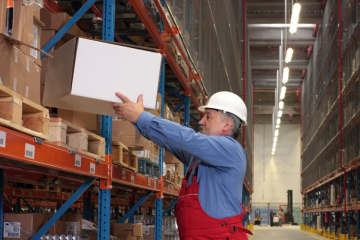Now is the perfect time to start reporting on sustainability for manufacturing companies everywhere.
Starting to measure and improve your business sustainability might feel like a daunting task—what will everyone think about our progress and sustainability initiatives, or lack thereof? What if our report is only a few pages long? Sustainability reporting has moved from a nice-to-have to a responsible business decision, not just for your customers, but for your stakeholders and employees, too.
Let’s dive into the reasons why sustainability reporting should be a key priority for your next fiscal year (and why you might want to start sooner rather than later).
1: Calls to Action
If you haven’t yet heard the calls for sustainability reporting from your clients, customers, stakeholders, and employees, you likely will soon. After all, the Business Roundtable, a group made up of leading CEOs, recently announced that the definition of corporate purpose is changing to focus on social and environmental wellbeing—going far beyond shareholder value.
People all over the world are becoming mindful about how their goods are made and where they come from. And they don’t just care about the final product—now, many suppliers and consumers alike are tracing environmental and social responsibility throughout their entire value chain.
Companies are putting more pressure on their manufacturing suppliers to assess their supply chains—and they’re asking complex questions about the origin of materials and conditions for workers, among other concerns. These questions are no longer limited to a “yes” or “no” – for some customer questionnaires, if you state that you have a supply chain environmental audit program in place, you will be prompted to upload proof of the program or provide additional detail. Being able to respond in full to these inquiries will help you remain (or become) a preferred supplier and demonstrate that you’ve heard their call to action and you’re taking steps to be a responsible business partner.
Sustainability reporting is a great way to explore the who, where, how, and why behind your manufacturing process–which, in our world of radical transparency, is key for proactively preparing your company for the future.
2: Conveying Your “Why”
Sustainability reporting should be more than just a simple statement on your website—it is a chance to introduce your company’s mission and vision for a sustainable future to investors, customers, and current/future employees who are looking to companies to address sustainability.
Conveying your “why,” that is, why you operate, why you care about sustainability, and why you’re interested in improving, can help retain customers and convince new ones to come and join you. You don’t have to be an immediate leader or strive for a perfect score on your first questionnaire response—many stakeholders are pleased to read that you are taking the first steps to evaluate your environmental and social risks and opportunities and putting management plans into place. It’s not where you are on the journey that matters, it’s that you’ve started to take the first steps toward more transparency, which speaks volumes more than saying nothing at all.
3: Strive for Leadership
Sustainability reporting can set your company apart and can showcase you as a leader in your field. It differentiates you and your offerings not only to your customers and stakeholders, but to your competitors in the market, too.
While sustainability reporting is still fresh and new for many manufacturers, now is the perfect time to jump in and present yourself as an industry leader. When you’re able to be open and honest about your environmental and social impacts, new opportunities to tell your story and explore real, tangible methods of improving your operations can materialize. In fact, once you get started down the sustainability reporting path, you will realize that your company is already doing great things that should be reported and shared.
Demonstrating your positive impacts to investors, stakeholders, and the C-suite is an effective way to show your company is leading and not shying away from talking about or assessing difficult issues.
Now is the Time to Start
There’s no time like the present to get started on your sustainability reporting approach. We know that a lack of buy-in, not knowing where to start, and having to convince leadership of the benefits can be a lot to handle—but now is the time to start publicizing the good you’re doing and use it to improve your brand image and position your business as a sustainable one.
Start off small and grow from there—define “sustainability” and what it means to your company and your stakeholders. Conduct a materiality assessment and ask your customers, stakeholders, and internal resources to prioritize the key environmental, social, and governance aspects that make up your sustainability story.
It doesn’t matter if your first sustainability report is one page or 100 pages, all that matters is that you own your narrative and share an accurate story that represents your company on your terms – don’t let rankers and raters tell it for you. The sooner you’re on board, the sooner you can start quantifying your investments and showcasing the good you’re doing.
Learn more about our sustainability services or contact us today to get support with sustainability reporting.
Want more news and insights like this?
Sign up for our monthly e-newsletter, The New Leaf. Our goal is to keep you updated, educated and even a bit entertained as it relates to all things EHS and sustainability.
Get e-NewsletterHave any questions?
Contact us to discuss your environment, health, safety and sustainability needs today.




